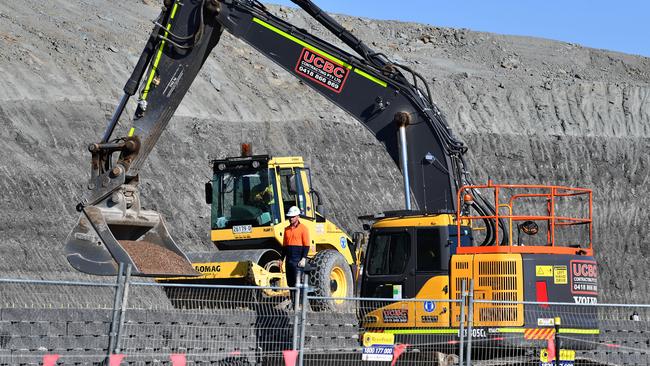Firms splurged $750m on new equipment in the December quarter
Generous tax incentives spark December quarter spending spree and hopes of business investment revival.

A suite of COVID-era tax incentives has led firms to splurge $750m on new equipment over the final three months of 2020, spurring hopes that the country’s V-shaped economic recovery will spark a much-needed revival in business investment.
Total new capital expenditure climbed by 3 per cent over the December quarter to $29.4bn, seasonally adjusted figures from the Australian Bureau of Statistics showed, after having contracted by a similar amount during the previous quarter.
The much stronger than anticipated result – the consensus among economists had been for 1 per cent rise – was driven by a 5.7 per cent increase in equipment, plants and machinery to $13.9bn.
“The federal government’s accelerated depreciation and instant asset write-off scheme are clearly having an impact,” EY chief economist Jo Masters said.
Investment in new buildings and structures also climbed, by a more sedate 0.7 per cent to $15.5bn.
Westpac economist Andrew Hanlan said “with the business mood upbeat, firms have opted to increase spending in response to the rapid rebound in activity conditions as COVID restrictions are rolled back”.
Still, equipment spending remained 5.7 per cent lower than a year earlier, showing that, while robust, the recovery from the worst downturn since the Great Depression remains incomplete.
With COVID-19 outbreaks triggering snap lockdowns over summer, businesses remain wary of committing to long-term investment plans – a reticence that should lift as vaccines are rolled out over coming months.
Firms upgraded their investment plans for this financial year, but told the ABS they planned on spending 5 per cent less than a year before. More positively, this was an improvement on the previous survey, which indicated they had expected to spend 10 per cent less.
The ABS also released its first survey of corporate Australia’s spending intentions for 2021-22, which pointed to another 3 per cent drop in business investment in the coming financial year.
But CBA economist Belinda Allen calculated that, based on previous experience that early forecasts are ultimately upgraded, the first estimate of $105bn in new capex in 2021-22 implied roughly a 10‑15 per cent lift in intentions from 2020-21 – “although these forecasts are typically subject to heavy revision”, Ms Allen said.
“Business investment generally lags the economic recovery and based on today’s first estimates it looks like this pattern will continue.”
By industry, investment in the December quarter by administrative and support services firms was up 46 per cent on a year earlier, with construction and wholesale trade firms recording the next biggest rises of around 8 per cent.
In contrast, investment by arts and recreation services businesses was 55 per cent below where it was in the final three months of 2020, while rental, hiring and real estate was down 25 per cent, and transport, postal and warehousing firms spent 20 per cent less.
December quarter national accounts will be released next Wednesday, and economists are expecting another strong GDP growth figure.
Separate ABS data, also released today, showed average weekly earnings figures fell over the six months to November, as low paid workers recovered jobs lost during the height of the national lockdown.
Average earnings for full-time workers fell by 0.1 per cent between May and November to $1712, the seasonally adjusted, biannual data showed.
Average earnings surged by 3.3 per cent over the six months to May, which reflected a “higher share of job losses in lower paid jobs and industries” resulting from the pandemic, the ABS said.
ABS head of labour statistics Bjorn Jarvis said the fall in average earnings in November represented a reversal of that phenomenon and “highlighted the extent of recovery in low paid jobs, hours and earnings since May”.
Indeed, Mr Jarvis said the latest earnings figures reflected “a return to more normal conditions”.
“The annual change in average earnings is now back in line with what we saw in November 2019, highlighting that the recovery in the labour market between May and November has seen changes in average weekly earnings return closer to the pre-pandemic conditions.”








To join the conversation, please log in. Don't have an account? Register
Join the conversation, you are commenting as Logout